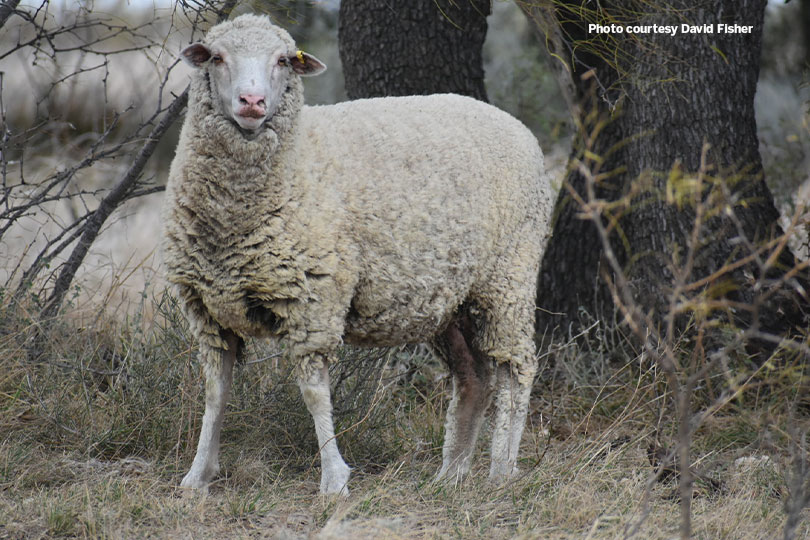By Jennifer Dorsett
Field Whitlock
In Texas, the Hill Country is ideal for raising sheep and goats.
Families like David Fisher’s have been doing just that in the area for generations. Although circumstances and markets have changed over time, sheep and goats remain a profitable enterprise.
“Mine is a family operation, and we’ve been running cattle, sheep and goats for five generations,” Fisher said. “That’s still the way it is—a little bit of everything. It’s all on fenced range, some family land, some leased land, as well. A good mix.”
Throughout the years, the Fisher family has run Angora goats, meat goats, Rambouillet sheep and other fine-wool sheep, crossbred blackface sheep, polled Hereford and Angus purebred cattle and some Angus-cross commercial cattle on their ranch in Sutton County, near Sonora.
The current market best supports commercial cattle, wool sheep and meat goat production, Fisher said.
“It’s a price issue, because there have been times when having cattle helped when sheep and goat markets were down or vice versa, but more so the way I look at things is I can utilize my country better if I have all three,” he said. “If I don’t have one of these species in the pasture, I’m leaving groceries on the table. Where we are, right on the edge of Hill Country, we’re not in the more desert area west of here, but we do have a lot of brush mixed in with the grass. So each species utilizes something different out there.”
In Texas and across the U.S., there’s been a shift over the last 20 years from a primarily mohair and wool-driven sheep and goat market to a bigger mix between meat-type and fiber breeds.
“The ethnic market has driven the sheep industry in Texas, and so that’s been a factor since I’ve been back on the family ranch these past 10 years,” Fisher said. “We had a traditional market where we sold fat lambs to a feedlot, and they went to one of two main plants in the U.S. Then, they went to a restaurant or retail grocery chain. But with the onset of a greater ethnic population, the market has changed. We’re selling way more smaller animals now. The prices are very good, and it doesn’t appear to be going away.”
One of the two processing plants he mentioned has since shut down, but Fisher noted a new lamb processing plant is set to open soon in San Angelo that will be a good outlet for Texas sheep raisers.
And the nation’s largest wool-testing lab is coming to San Angelo, too.
“I’m optimistic about both opportunities. It’s great to have these options in the U.S., but especially great to have it in our backyard in San Angelo,” he said.
Fisher is optimistic about the future of sheep and goat production in Texas, too.
“Things are changing. I don’t think you’ll see very many big producers like we used to when I was a kid. There were guys with 1,000, maybe 2,000 head, and that’s going away. But I don’t think it will change the numbers, because I think you’re going to start to see lots of small ranchers in the U.S.,” he said. “I think we’ll see a shift away from wool sheep and Angora goats. But with meat prices where they’re at and the story of sustainability of sheep and goats and what they can do, they’re not going anywhere.”
That’s because sheep and goats are so versatile and can fit into nearly any operation. And Fisher said direct marketing will likely open even more avenues for sheep and goat ranchers.
“I believe in the products I raise strongly—sheep and goats are premium protein. There’s nothing better out there. There is no better fiber and no better sustainability than wool, even when there’s market volatility and pessimism on how things may go down the road,” he said. “Even before COVID hit, we were selling premium lamb and goat and were exploring the opportunity of direct marketing our fiber. I’m diversified, but I’m also creative. I think plenty of people have it in them to be as creative and make niche opportunities work for themselves, as well.”


Good article. Thanks for sharing insights on possibilities and projections for goat production.
Very interesting article. I’m exploring a smaller-than-yours goat herd. I’ve got a halal/kosher butcher 10 miles away and enough foraging land for a small-ish flock. I’m looking for the downsides and risks, but am cautiously optimistic. Thank you.